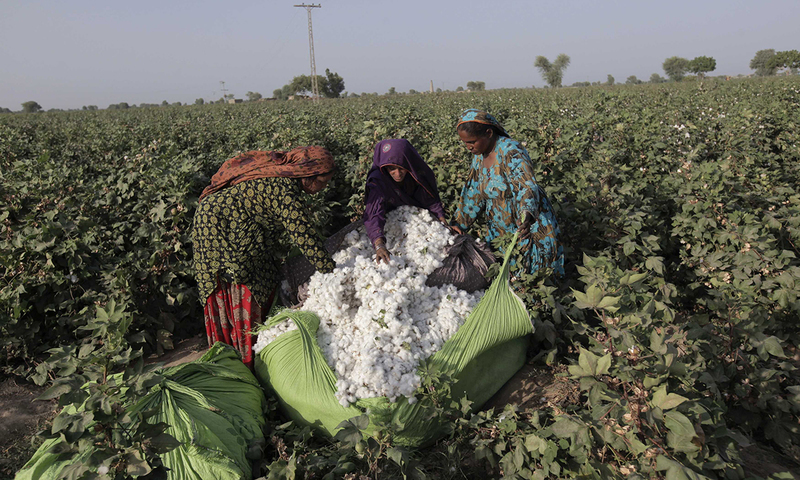KARACHI: Battered by climate change, the cotton production continues to give a gloomy picture as effects of high temperature, heavy rains and gusty winds reduced crop by around 1.814 million bales.
Data released by Pakistan Cotton Ginners’ Association (PCGA) on Monday shows cotton production up to November 15 at 6.857 million bales, down 21 per cent over 8.671m bales in same period last year.
A steep fall in cotton production in Punjab was the major factor which reduced overall output in the country. Sindh also suffered immensely due to impact of climate change.
According to details, Punjab produced 3.692m bales as against 4.985m in corresponding period last year, showing a decline of around 26pc.
Similarly, Sindh’s crop was lower by 14.14pc or 521,167 bales at 3.165m bales, compared to 3.686m produced in same period of previous season.
A cotton broker and grower from Sindh, Girdhari Lal Assudomal, told Dawn the situation was alarming and this strongly indicates that next crop could be even lower if no remedial measures were taken.
Cotton Analyst Naseem Usman urged the government to work on ‘war footings’ on many fronts to save the indigenous crop of Mehran valley – which had grown for centuries in the region – from vanishing.
He regretted that the basic issue of cotton crop had been the supply of certified seed to growers. But unfortunately the concerned government departments were not working or doing research work for evolving high yielding, pest and high temperature resistance seed. Another analyst, Taqi Abbas, said that one of the biggest issue confronting cotton crop was the supply of substandard pesticides.
He further said it was not possible to ensure pure pesticides when there are around 700 companies in the field, and added only 30-35 should be allowed to operate as is the case with India.
Looking at the developing scenario, private estimates now put cotton production at around 8.5-9m bales and this would mean heavy imports of around 6m would be putting burden on foreign exchange reserves to the tune of $1.5 billion, he added.



